While many people may associate Dayton with aviation and industry, the city also serves as the final resting place for a surprising number of famous individuals. From historical figures to cultural icons, Dayton's cemeteries are home to a diverse array of notable graves. Together, we'll explore the lives and legacies of 30 famous people buried in Dayton, offering a unique perspective on Dayton's rich history and cultural significance.
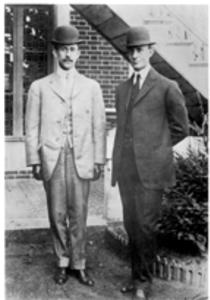
1. Orville Wright
Woodland Historic Cemetery & Arboretum
Orville Wright, a Dayton native, was one of the pioneering brothers who changed the course of history by inventing the first successful airplane. After dropping out of school at the age of 18, Orville and his brother Wilbur started a printing business and later ventured into the bicycle industry. Their fascination with flight led them to delve into the study of gliders and aerodynamics. Orville's ingenuity and mechanical skills were instrumental in developing the engine that would power their aircraft. On December 17, 1903, Orville made history by piloting the Wright Flyer for a 120-foot flight, marking the beginning of powered, controlled flight.
2. Wilbur Wright
Woodland Historic Cemetery & Arboretum
Wilbur Wright, the elder brother of the Wright brothers' aviation duo, played a crucial role in developing the theory and mechanics of controlled flight. While Orville focused on the engine and mechanics, Wilbur delved into the intricacies of wing warping and aircraft control. Through meticulous experimentation and theoretical research, Wilbur helped develop the wind tunnel, a groundbreaking tool that allowed the brothers to accurately measure lift and drag. The Wright brothers' combined expertise in science, engineering, and practical experimentation paved the way for the future of aviation.
3. Paul Laurence Dunbar
Woodland Historic Cemetery & Arboretum
Paul Laurence Dunbar, a prominent figure in African American literature, broke barriers and paved the way for future generations of writers. Despite his parents' illiteracy, Dunbar's mother instilled in him a love of education, leading him to excel in school and become involved in literary pursuits. After graduating from high school, Dunbar collaborated with his classmate Orville Wright on the Dayton Tattler, a local newspaper that served the African American community. Dunbar's contributions to African American literature were significant, as he explored themes of racial identity, social injustice, and the complexities of the human experience. His work helped to raise awareness of the struggles and triumphs of Black Americans during a time of segregation and discrimination.
4. Erma L. Bombeck
Woodland Historic Cemetery & Arboretum
Erma Bombeck, a beloved Dayton native, brought joy and laughter to millions with her relatable and witty humor. Her writing career took flight early, with contributions to her high school newspaper and local publications. After graduating from the University of Dayton with a degree in English, Bombeck honed her craft as a journalist, writing for various newspapers and magazines. Bombeck's talent for capturing the everyday struggles and triumphs of family life resonated with readers across the country. Her syndicated columns appeared in over 900 newspapers, sharing her humorous observations on parenting, marriage, and life's quirks. In addition to her newspaper columns, Bombeck authored 12 books, became a sought-after speaker, and made frequent appearances on radio and television.
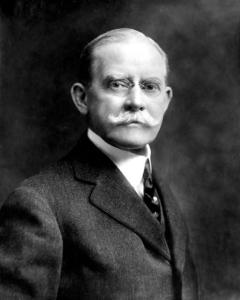
5. John Henry Patterson
Woodland Historic Cemetery & Arboretum
John H. Patterson, a visionary businessman, played a pivotal role in the growth and success of the National Cash Register Company (NCR). Renowned for his ability to adapt and improve upon existing ideas, Patterson introduced numerous innovative practices that would become industry standards. Patterson's commitment to employee welfare was groundbreaking for his time. He established employee programs, including a newspaper, suggestion box, reward system, and sales conventions, fostering a positive and supportive work environment. His factory served as a model for others, setting new standards for workplace conditions and employee well-being. Patterson's contributions to Dayton extended beyond the business world. He donated the land for Hills and Dales Park to the city, providing a green space for residents to enjoy.
6. James Ritty
Woodland Historic Cemetery & Arboretum
James Ritty revolutionized business transactions with his invention of the cash register in 1879. His "Incorruptible Cashier" simplified bookkeeping and provided a reliable system for tracking sales and profits. Prior to the cash register, merchants struggled to maintain accurate records of their transactions, leading to difficulties in managing finances and determining profitability. Ritty's invention addressed these challenges by providing a secure and efficient way to store money and track sales data. Ritty's invention then caught the attention of John H. Patterson, who acquired the patent and founded the National Cash Register Company.
7. David A. Sinclair
Woodland Historic Cemetery & Arboretum
David A. Sinclair, a dedicated advocate for education and community development, played a pivotal role in the establishment of the YMCA movement in Dayton. His commitment to providing opportunities for young people led to the creation of vocational training classes that eventually evolved into Sinclair Community College. Sinclair's arrival in Dayton in 1874 was inspired by the impressive leadership of the local YMCA branch. Recognizing the need for skilled workers, he sought to address the unemployment problem by offering practical training programs. His vision and determination paved the way for the development of Sinclair Community College, a vital educational institution that bears his name and continues to serve the Dayton community.
8. James M. Cox
Woodland Historic Cemetery & Arboretum
James M. Cox, a visionary businessman and influential politician, left a lasting impact on Dayton and the nation. Cox founded Cox Media Group, one of the largest communications companies in the world, demonstrating his entrepreneurial spirit and foresight. His involvement in politics was equally significant. Cox served as a U.S. Representative for Dayton and Governor of Ohio, where he championed progressive policies such as workers' compensation and flood control. His leadership during the 1913 Dayton flood was instrumental in securing state aid and creating the Miami Conservancy District. Cox's political ambitions extended to the national stage, as he was the Democratic nominee for President in 1920. Although he lost the election, his campaign and subsequent role as an advisor to President Franklin D. Roosevelt solidified his position as a prominent figure in American politics.
9. Colonel Edward Andrew Deeds
Woodland Historic Cemetery & Arboretum
Colonel Edward A. Deeds, another prominent figure in Dayton's history, was a man of many talents. As an engineer, inventor, and industrial organizer, he made significant contributions to the city's economic development. Deeds' commitment to public service was equally impressive. He played a pivotal role in the creation of the Miami Conservancy District, a system of dams that protected half a million people from the devastating effects of flooding. His leadership as the first president of the Conservancy District spanned 36 years. Deeds' partnership with Charles Kettering led to the invention of the self-starter for automobiles and the formation of the Dayton Engineering Laboratories Company, later known as DELCO. Together, they also established the Engineer's Club of Dayton and donated land for a public aviation field.
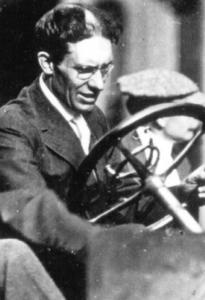
10. Charles F. Kettering
Woodland Historic Cemetery & Arboretum
Charles F. Kettering's contributions to technology, industry, and philanthropy continue to shape our lives today. Kettering's career began at NCR, where he was tasked with electrifying the cash register. His partnership with Colonel Edward Deeds led to the formation of the Dayton Engineering Laboratories Company, later known as DELCO. Together, they pioneered the development of the auto ignition system and self-starter, revolutionizing the automobile industry. Kettering's innovative spirit extended beyond automotive technology. He led the development of numerous other groundbreaking inventions, including the portable electrical generator, synthetic aviation gasoline, pilotless aircraft, baby incubators, and air conditioning. He co-founded the Sloan-Kettering Institute for Cancer Research and established the Kettering Foundation, which continues to support scientific research and community development. His generosity also benefited local institutions, including Antioch College.
11. Virginia W. Kettering
Woodland Historic Cemetery & Arboretum
Virginia Kettering, a prominent philanthropist and cultural leader, made a profound impact on the Dayton community through her generous giving. Her contributions to arts, education, and healthcare institutions transformed the region's landscape. Kettering's most significant contribution was to the Kettering Medical Center, which she established as a gift to the community. She also played a pivotal role in the development of the Fraze Pavilion and the renovation of the historic Victoria Theatre. Kettering's generosity extended to numerous other institutions, including the National Museum of the U.S. Air Force™, Dayton Art Institute, Dayton Philharmonic, Dayton Performing Arts Fund, Dayton Ballet, and Miriam Rosenthal Memorial Fund. Her vision and support helped to enrich the cultural life of the community and make the arts accessible to thousands.
12. Agnes Moorehead
Dayton Memorial Park
Agnes Moorehead, an American actress, is acclaimed for her iconic portrayal of the character Endora, a witch, in the television series Bewitched. In her role as Samantha's overbearing mother, Endora proved to be a constant source of exasperation for the unfortunate Darrin, frequently materializing and vanishing within his suburban abode, often leading to magical mishaps. Moorehead appeared onstage early on in her career, making her first appearance when she was just 10 years old. She continued to work until near the end of her life, ending her career on the Broadway stage. Dayton is honored to be her final resting place, as it was the last pastoral assignment of her father.
13. August F. Foerste
Woodland Historic Cemetery & Arboretum
Dr. August F. Foerste, an internationally renowned geologist and paleontologist, made significant contributions to the understanding of the Miami Valley's geology. His extensive research and publications, including the seminal work "Geology of Dayton and Vicinity," established him as a leading expert in the field. Foerste's expertise was instrumental in the development of the Miami Conservancy District, as he provided valuable insights into the region's geological characteristics. His advice on dam placement and flood control measures played a crucial role in protecting the community from future disasters. In addition to his scientific pursuits, Foerste dedicated his life to education. He taught physics and science at Steele High School for 38 years, inspiring countless students to pursue careers in the sciences.
14. John A. McMahon
Woodland Historic Cemetery & Arboretum
John A. McMahon, a prominent Dayton attorney and statesman, is widely regarded as one of the greatest legal minds in the city's history. His distinguished career spanned over six decades, marked by significant contributions to the legal and judiciary system. McMahon's political career included serving in the U.S. Congress from 1874 to 1881, where he was selected to prosecute the impeachment of Secretary of War Belknap. His legal expertise and advocacy skills were instrumental in this landmark case. Following the devastating 1913 Dayton Flood, McMahon played a pivotal role in drafting the Conservancy Act of Ohio, a groundbreaking piece of legislation that established the nation's first regional flood control system. This innovative law served as a model for future flood control initiatives, including the Tennessee Valley Authority. McMahon's commitment to improving the legal profession was evident throughout his career. He founded and served as president of the Ohio State Bar Association, advocating for education and measures to enhance public confidence in the bar.
15. George H. Mead
Woodland Historic Cemetery & Arboretum
George Mead, a prominent figure in Dayton's business community, played a crucial role in revitalizing the Mead Paper Company and shaping the city's economic landscape. His entrepreneurial spirit and strategic leadership transformed the struggling family business into a thriving enterprise. Mead's interest in public service led him to take on various federal roles, including membership on the Business Advisory Council and Industrial Advisory Council of the National Recovery Administration. During World War II, he served on several government boards, contributing his expertise to the war effort. After the war, President Truman appointed Mead to the Hoover Commission, tasked with streamlining the executive branch of the federal government. He also served as an advisor to the Marshall Plan agency and helped found the Dayton Council on World Affairs.

16. George P Huffman
Woodland Historic Cemetery & Arboretum
George Huffman's entrepreneurial ventures spanned a variety of industries, including manufacturing, real estate, and publishing. Huffman's most notable achievement was the acquisition and expansion of the Davis Sewing Machine Company. He moved the factory to Dayton and adapted it to produce bicycles, laying the groundwork for the Huffman Manufacturing Company, later known as the Huffy Corporation. Huffman's business acumen extended to other industries as well. He was involved in real estate development, serving as president of the National Improvement Company. He also held leadership positions in the Monitor Publishing Company and Miami Valley Elevator Company. Huffman's legacy as a successful businessman and entrepreneur is evident in the lasting impact of his companies on the Dayton community.
17. Katherine Kennedy Brown
Woodland Historic Cemetery & Arboretum
Katharine Kennedy Brown, a prominent figure in Ohio and national politics, left an indelible mark on her community and the Republican Party. For over five decades, she was a driving force in shaping policy and advocating for conservative principles. As a member of the Republican National Committee and a delegate to numerous national conventions, Brown played a pivotal role in party leadership. She also served as an advisor to several Ohio governors and President Richard Nixon, lending her expertise and influence to important policy decisions. Beyond her political career, Brown was deeply committed to her community. She founded the Junior League of Dayton and served on the boards of the Dayton Art Institute and Wilberforce University. Her contributions to these organizations helped to enrich the cultural and educational landscape of the region. While the legend of her involvement in the routing of Interstate 75 may be apocryphal, it speaks to her influence and the respect she commanded within her community.
18. Frederick H. Rike
Woodland Historic Cemetery & Arboretum
Frederick Rike's 40-year tenure as President of Rike-Kumler Department Store Company was marked by his unwavering commitment to excellence and his passion for serving the community. Starting as a humble salesman, Rike's hard work and dedication propelled him to the top of the company. Under his leadership, Rike-Kumler became a cornerstone of Dayton's retail scene, anchoring the corner of Second and Main Streets for many years. Beyond his business accomplishments, Rike was deeply involved in community affairs. He played a crucial role in the recovery efforts following the devastating 1913 Flood, and served on the charter commission that reorganized Dayton's government. His advocacy for the Miami Valley Conservancy District helped to protect the region from future floods. Rike's commitment to serving the community extended to his involvement in various organizations. He served as President of the Dayton Boy Scouts and Community Chest, demonstrating his dedication to youth development and charitable causes. Nationally, he held the position of President of the National Retail Dry Goods Association, lending his expertise to the retail industry at a national level.
19. David Donald Albritton
Woodland Historic Cemetery & Arboretum
David D. Albritton, a Dayton native, etched his name in history as an Olympic medalist, state legislator, and dedicated educator. His remarkable journey exemplifies the power of perseverance, athleticism, and community service. Albritton's crowning achievement came in 1936, when he won a silver medal in the high jump at the Berlin Olympics. Competing alongside his lifelong friend and teammate Jesse Owens, Albritton set a world record with a leap of 6 feet, 9 7/8 inches. Following his Olympic success, Albritton dedicated himself to serving his community. He became a teacher and coach at Dunbar High School, where he led the track team to three state championships. Breaking the segregation barrier, he paved the way for Dunbar's integration into the Public High School League. Albritton's commitment to public service extended beyond education. In 1960, he was elected to the Ohio House of Representatives, where he served with distinction. As a testament to his legacy, the Ohio Amateur Athlete of the Year award is named in his honor.
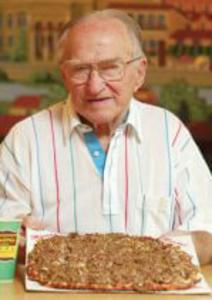
20. Marion J. Glass
Calvary Cemetery
Marion's Piazza, a beloved Dayton institution, has been serving up delicious pizza for over 50 years. Founded by Marion Glass in 1965, the restaurant quickly gained a reputation for its exceptional food and welcoming atmosphere. Glass's vision of providing customers with the best possible product at the best value has been the guiding principle behind Marion's Piazza's success. The restaurant's thin crust pizza cut in squares, made with only the finest ingredients, has become a local favorite and has earned numerous awards. Over the years, Marion's Piazza has expanded to nine locations in the Dayton area, serving as a gathering place for families, friends, and community members. The restaurant's commitment to excellence and its warm hospitality have made it a beloved part of the Dayton community. Thank you Marion Glass!
21. Rev. DeSoto E. Bass
Woodland Historic Cemetery & Arboretum
Reverend DeSoto Bass, affectionately known as the "Community Pastor," was a pillar of the Dayton community for many years. His unwavering dedication to serving others, especially children, earned him the respect and admiration of countless individuals. After completing his education at Wilberforce University and United Theological Seminary, Bass became the pastor of the First Wesleyan Methodist Church at the young age of 28. A beloved figure in the city, he was often seen walking the streets with crowds of children, simply enjoying their company. Bass was known for his compassionate care for his congregation. He frequently visited members of his church, providing for their needs and even borrowing coal from the church to give to those in need. His commitment to pastoral care was unparalleled, as one contemporary noted that he made more pastoral calls in 33 years than most people would make in a year of traveling. For 27 years, Bass led singing parties on Sunday afternoons, bringing groups to sing spirituals at hospitals, the workhouse, and the jail. His dedication to his church, race, and community was recognized with the naming of the first public housing development in Dayton, DeSoto Bass Courts.
22. Electra C. Doren
Woodland Historic Cemetery & Arboretum
Electra C. Doren, a visionary librarian and advocate for education, played a crucial role in building the strong public library system that serves Montgomery County residents today. Beginning her career at the age of 18, Doren rose to become the head librarian, leaving a lasting impact on the community. After a brief stint as director of the Western Reserve University Library School, Doren returned to Dayton to help rebuild the Montgomery County library services in the aftermath of the devastating 1913 flood. Leading a dedicated team of staff and volunteers, she worked tirelessly to salvage damaged library materials, ensuring that the library could reopen to the public just three months after the flood waters receded. Doren was a pioneer in library services, introducing several innovations that improved access to information. She established a card catalog, making it easier for patrons to locate books, and opened the library shelves to public browsing, encouraging independent exploration and discovery. Beyond her contributions to the library, Doren was also a passionate advocate for women's suffrage. She donated her extensive collection of primary sources to the Montgomery County Public Library, creating the largest collection of suffrage materials in the nation.
23. Charlotte Reeve Conover
Woodland Historic Cemetery & Arboretum
Charlotte Reeve Conover, a distinguished author, lecturer, and historian, played a pivotal role in preserving and promoting the rich history of Dayton, Ohio. Her pioneering studies of the city's past introduced Daytonians to their own heritage and inspired future generations. A woman of exceptional intelligence and intellect, Conover contributed to renowned publications such as Atlantic Monthly, Ladies Home Journal, and Harper's magazines. She also served as the Women's page editor of the Dayton Daily News and wrote a popular weekly column, "Mrs. Conover's Corner." Conover's passion for Dayton history led her to write several influential works, including the acclaimed "Dayton, Ohio: An Intimate History." Through her writings, she shared her deep knowledge and love for the city, captivating readers and sparking a renewed interest in local history.
24. Eliam E. Barney
Woodland Historic Cemetery & Arboretum
Eliam E. Barney, a multifaceted individual, made significant contributions to the fields of education, industry, and philanthropy. As a teacher, Barney instilled a love of learning and a respect for nature in his students. As an entrepreneur, he co-founded Barney and Smith Manufacturing Company, one of Dayton's earliest and most successful businesses. And as a philanthropist, he dedicated himself to improving the community. Barney's educational career began at the Dayton Academy, where he taught nature studies, reading, and botany. His unique teaching methods included having students read horticultural journals and taking field trips to gather plants for the school grounds. In 1844, he took charge of Cooper Seminary, a school for young women. Barney's entrepreneurial spirit led him to join forces with Ebenezer Thresher in 1851, forming the Barney and Smith Manufacturing Company. This company quickly became a leader in the railroad car industry, contributing to Dayton's economic growth. Beyond his professional accomplishments, Barney was a noted philanthropist. He was passionate about promoting the planting and propagation of catalpa trees, contributing to the beautification of Dayton.
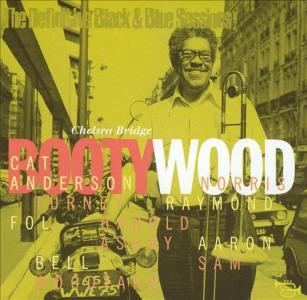
25. Mitchell "Booty" Wood Jr.
Woodland Historic Cemetery & Arboretum
Mitchell "Booty" Wood, a renowned trombonist and educator, left an indelible mark on the world of jazz music. His talent and passion for his craft took him on an extraordinary journey, from the streets of Dayton to international stages. Wood's musical journey began at Dunbar High School, where he honed his skills on the trombone. After graduating, he joined the Lionel Hampton Band, embarking on a career that would take him around the world. He later played with legendary musicians like Duke Ellington and Count Basie, earning accolades and admiration from audiences and bandleaders alike. Wood's travels spanned continents, from Sweden to Japan, South America to Mexico, and France. His exceptional trombone playing and dedication to his craft earned him the coveted position of first trombone in each band he played with. After years of touring and performing, Wood returned to his hometown of Dayton to share his knowledge and expertise with the next generation of musicians. He taught jazz at Dunbar High School and Central State University, inspiring countless students with his passion for music and his commitment to excellence.
26. Annae B. B. Gorman
Woodland Historic Cemetery & Arboretum
Annae Barney Gorman, a visionary civic and business leader, dedicated her life to serving the needs of children in the Dayton community. Her unwavering commitment to improving the lives of young people led to the founding of the Barney Community Center, now known as the Children's Medical Center of Dayton. Gorman's philanthropic journey began during World War I, when she volunteered at Walter Reed Army Hospital. There, she instructed wounded veterans in new skills to help them transition back to civilian life and find employment. Inspired by her experiences, Gorman returned to Dayton and began teaching similar skills to children with physical disabilities. The Barney Community Center, established by Gorman, provided comprehensive services to children, including health care, free clinics, occupational therapy, classes in first aid, cooking, and current events, as well as a lunch program. Gorman's personal dedication to the center was evident in her weekly presence, and hundreds of children who benefited from her services knew her by sight. Over time, the Barney Community Center evolved into Dayton Children's, a world-class pediatric medical center. Gorman's vision and unwavering commitment to helping children in need played a pivotal role in creating this essential institution.
27. Julia Perrine Shaw Patterson Carnell
Woodland Historic Cemetery & Arboretum
Julia Shaw Patterson Carnell, a visionary philanthropist and patron of the arts, played a pivotal role in shaping the cultural landscape of Dayton, Ohio. Her generous donation of nearly $2 million led to the construction of the Dayton Art Institute's stunning new building, which remains a landmark in the city. Carnell's commitment to the arts was unwavering. She made a bold promise to the community: if they would fund the operations of a new art museum, she would provide the building. The challenge was met, and Carnell's generous contribution made the dream a reality. The Dayton Art Institute's building, completed in 1930, is a magnificent example of Italian Renaissance architecture. Designed by architect Edward B. Green, the structure spans nearly 60,000 square feet and offers a breathtaking view of the city.
28. Jacob Osler Joyce
Woodland Historic Cemetery & Arboretum
With a mind teeming with ideas, Jacob O. Joyce held nearly as many patents as the legendary Thomas Edison. One of Joyce's most significant inventions was the hydraulic lifting jack. Recognizing the need for a more efficient and powerful tool for moving heavy equipment, Joyce developed a hydraulic jack that revolutionized industries from mining to railroad transportation. In 1873, Joyce founded the Joyce-Cridland Company, dedicated to designing, patenting, and manufacturing various types of jacks. The company quickly gained a reputation for innovation and quality, and its products became essential tools for industries around the world. Today, Joyce-Cridland continues to be a leading manufacturer of heavy equipment moving devices.
29. Lewis B. Gunckle
Woodland Historic Cemetery & Arboretum
Lewis B. Gunckle's tireless efforts on behalf of veterans and his commitment to community service earned him the respect and admiration of countless individuals. Gunckel's advocacy for veterans began during his time in the Ohio State Senate, where he championed the establishment of a state soldiers' home. His efforts were recognized by President Abraham Lincoln, who appointed him to the Board of the new National Homes for Disabled Volunteer Soldiers (NHDVS). Under Gunckel's leadership, Dayton was chosen as the location for the Central Branch of the NHDVS, which quickly became the largest complex of its kind in the world. By 1884, the Dayton Soldiers' Home was caring for over 7,000 Civil War veterans. Lewis B. Gunckel's legacy as a champion for veterans and a dedicated community leader continues to inspire and influence the people of Dayton.
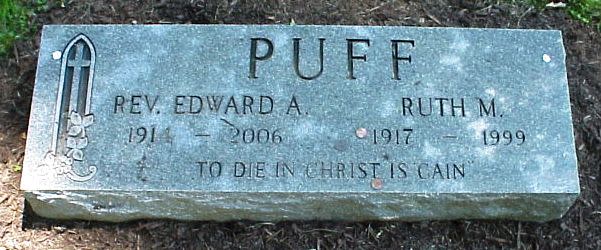
30. Rev. Edward A. Puff
Woodland Historic Cemetery & Arboretum
Reverend Edward A. Puff, a beloved pastor and community leader, served as the spiritual guide for Memorial United Church of Christ for an impressive four decades. Puff's broad vision of the church's mission led him to establish numerous organizations that continue to serve the needs of the community. These include the Trinity Retirement Home, the East Dayton Health Center, the Burkhardt Center, and the East Dayton Food Pantry. While other churches moved to the suburbs, Puff remained steadfast in his commitment to serving the urban community. As he once said, "If the Lord was coming, he would come to Fifth Street!" Puff's dedication to his community was widely recognized, and he received numerous awards and honors, including the Montgomery County First Peace Bridge Award. His association with the Wright family led to his participation in the Centennial of Flight Celebration, where he eloquently described the Wright brothers' dream that "hardened into a deed." Reverend Edward A. Puff's ministry exemplified the power of faith to inspire and transform.
By exploring the lives and legacies of these 30 notable people, we gain a deeper appreciation for Dayton's past and its enduring impact on the world. To learn more about these individuals and discover other notable graves in the area, be sure to visit the various cemeteries in Dayton, including Woodland Cemetery, Calvary Cemetery, Dayton Memorial Park and Dayton National Cemetery. We think you'll be astonished by the beauty of these locations. And, what a great way to pay tribute to the individuals who have shaped the city as we know it today?!
---
Be sure to request a FREE Destination Dayton Visitors Guide and download the FREE Destination Dayton App for more about things to see and do in Dayton. For more information about Destination Dayton and the services it offers, visit DestinationDayton.org or call 800-221-8235.

